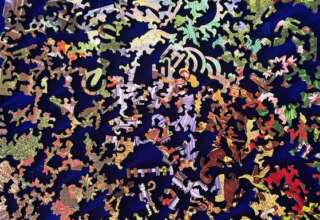
Conclusions
I bring this essay to a close by turning to you as the reader and recommend that you reflect on your own human spectrum preferences and your own dominant (and nondominant) interpersonal needs. First, I suggest that you address the following question: What is your strongest interpersonal need/color? Second, I encourage you to reflect on a complementary question: What is your weakest interpersonal need/color? The perspective and need can shift during the life of one’s participation in a group (especially as it moves to becoming a functioning team). Therefore, the following question is important: When and under what circumstances do your interpersonal need preferences change? Finally, I suggest that you take an appreciative perspective (very Azure Blue) and ask the following question: What are the groups/teams like in which you flourish—and how do you help to create these flourishing conditions in groups/teams of which you are a member?
__________
References
Argyris, Chris (1985). Action Science. San Francisco: Jossey-Bass.
Bergquist, William (2020) “Leadership and Anxiety: Containment and Metabolism I: Anxiety an a VUCA Plus Environment. Library of Professional Psychology. https://psychology.edu/library/leadership-and-anxiety-containment-and-metabolism-i-anxiety-in-a-vuca-plus-environment/
Kaufman, Stuart (1998) At Home in the Universe. New York: Oxford University Press.
Lewin, K., Lippitt, R., & White, R.K. (1939). “Patterns of aggressive behavior in experimentally created social climates”. The Journal of Social Psychology, 10(2), 269-299.
Marrow, Alfred (1969) The Practical Theorist: The Life and Work of Kurt Lewin. New York: Basic Books.
Menakem, Resmaa (2017) My Grandmother’s Hands: Racialized Trauma and the Pathway to Mending Our Hearts and Bodies, Las Vegas, Nevada: Central Recovery Press.
Miller, John and Scott Page (2007) Complex Adaptive Systems. Princeton NJ: Princeton University Press.
Prigogine, I. and Stengers, I. (1984) Order Out of Chaos. New York: Bantam Books.
Schutz, Will (1966) The Interpersonal Underworld. Palo Alto, California: Science and Behavior Books.
Schutz, Will (1994) The Human Element. San Francisco: Jossey-Bass.






